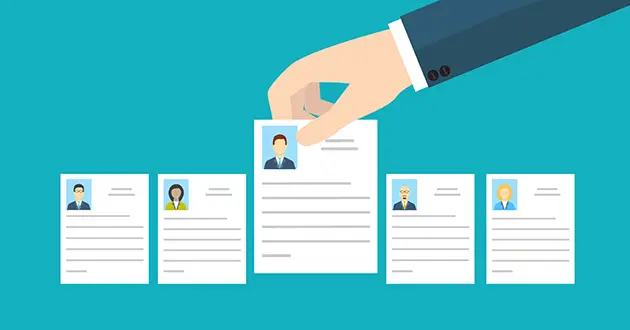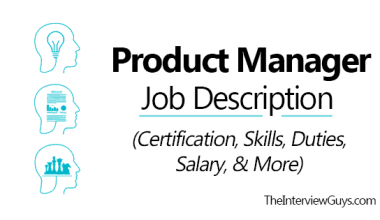Making the choice to hire a new employee, determining what skills and experience an employee will require, recruitment and selection, onboarding, and new employee training are all part of the hiring process. Here, we’ll see the steps involved in the hiring process, with reference to real-life examples like Google and Amazon.
What is The Hiring Process?
The hiring process is the process of locating, choosing, and hiring new personnel for a company. This procedure is divided into three parts: planning, recruitment, and employee selection. There are specific procedures to take to ensure the process’s success because it demands strategic and pragmatic thinking while remaining empathetic.
Why Is A Hiring Process Necessary?
A hiring team that is equipped with a reliable hiring process is better suited to developing the suitable talent pool. A hiring procedure can be successful if it is carefully planned and executed. Here’s why it is important:
- Remove the uncertainty from the recruiting process.
- Increase the number of applicants for a job opportunity while preserving candidate quality.
- Reduce your chances of hiring an undesirable candidate.
- Reduce hiring time significantly, giving you a competitive advantage.
- Assist in developing stronger relationships with applicants and offering a consistent candidate experience.
- Improve the employer brand by giving an excellent candidate experience.
As a result of all of this, the company can establish a favorable position in the talent market and use it to attract high-quality individuals.
Steps In The Hiring Process
Here’s a hiring process checklist with steps to assist you make your hiring process more efficient and effective:
#1. Make a hiring strategy.
The hiring process begins with proper preparation, which includes recognizing and predicting your company’s employment needs. Recruiters typically hire for an open position or if they require additional resources. It is vital that the hiring team monitors the organizational growth rate and plans the necessary resource additions. Additionally, the team should monitor the staff and try to anticipate any impending exits.
It is critical to create a hiring strategy by proactively identifying needs in order to streamline the recruitment process.
Regular meetings with team managers to discuss workload might help anticipate the need for additional resources. Evaluating team performance and identifying issues that are not being addressed might assist you in determining any prospective hiring needs. It would be excellent if you maintained track of the expected and actual results.
#2. Define your employment role.
The greatest recruiters respond to a job demand as soon as it becomes apparent. It is critical to begin filling a demand before it becomes an urgent issue for the firm. Defining the job role with work criteria, experience and abilities required, qualifications, and so on allows you to advance quickly to the next steps. It is preferable if the job descriptions for the company roles are prepared ahead of time. You might consider employing an applicant tracking system (ATS) that provides well-written job descriptions for diverse roles.
Making a clear and simple job description might assist you in improving the quality of applications. It will also assist potential candidates in determining their suitability for the post.
Here are some important items to include in your job description:
- Introduction and company name
- Occupational title
- Minimum requirements
- A diverse breadth of experience
- Responsibilities expected
- Benefits and compensation
- Location
- Trainings, if particularly requested
- A compelling Call To Action
Recruiters must successfully communicate with candidates in order to conduct a successful hiring process. A job description is an important piece of communication. As a result, it is vital that it is concise and informative.
#3. Establish the application procedure.
The following stage is to create a foolproof application process. A one-click application form with simply a resume upload option will generate a large number of applications, but the quality and relevancy of candidates applying for the post may suffer. As a result, it is critical to have a solid application form that has been tried and tested.
Using an ATS, it is simple to create an application form with some basic screening questions. These screening questions may include inquiries about:
- Their work authorization
- Their credentials, such as mastery of a specific tool or platform
- Their previous job experience
These questions make it simple to eliminate candidates who do not fulfill the qualifying criteria, saving you a lot of time. This application form can be hosted on your professional website. However, there is a fine line between screening prospects and pushing them away by including too many screening questions in the form. So keep an eye on application drop-offs and make screening questions brief. You want to reject the less serious applicants but not the good ones.
#4. Candidate sourcing
Advertise:
It can be difficult to advertise the employment role in the appropriate places. It is, nonetheless, critical to the success of a hiring process. Many recruiters rely primarily on external resources while hunting for candidates. Making your staff aware of an open position is an important part of the job-search process. Even if you don’t want to hire internally, employee referrals can help you find qualified applicants.
External candidate-sourcing channels should include a diverse range of social media platforms, job boards, and the company’s website. An ATS allows you to post to different sourcing platforms from a single dashboard.
Companies must conduct extensive research to determine where their prospective candidates spend the majority of their time looking for work. Choosing the ideal posting channel is critical for attracting the top candidates. If your perfect prospect is looking for work on social media, advertising in newspapers will be extremely ineffective.
Recruit aggressively:
Advertising is only one method of reaching out to potential applicants. Companies must keep in mind that not every candidate is actively hunting for work. Passive job seekers account for up to 70% of the worldwide workforce. Failure to tap into this talent pool might have devastating consequences for the employment process.
As soon as the advertising begins, you should start actively reaching out to possible prospects. An ideal method would be to contact the few people you believe are the most suitable. Also, if you have a talent pool established, go through it to locate the finest candidates for the role. Active recruiting can assist businesses in closing the gap between their advertising and the suitable individuals. Proactive recruitment throughout the year to establish a talent pool is another fantastic method.
#5. Screening of applications or resumes
Screening applications and shortlisting prospects is an extremely important part of the employment process. The subsequent phases are entirely based on the quality and effectiveness of shortlisting. A successful sourcing campaign may result in a flood of applications. You must establish a consistent screening and shortlisting procedure for these applicants.
Manual screening of resumes for relevant fit might be the most time-consuming aspect of a recruitment process, particularly when there is a high application volume. Make your life easier by creating a pre-defined set of criteria that your ATS may use to classify applicants based on the competencies required for the role.
#6. On-the-spot screening
You would have already shortlisted the applications by this point in order to be left with the most suitable ones. However, it is likely that some applicants have accepted another work or have stopped seeking for a career transition. As a result, before scheduling an in-person interview, a brief phone conversation would be beneficial.
You can measure the candidate’s interest and discover more about their personality during a screening call. Looking at a resume is one thing; hearing from the candidate about their experiences is quite another. By including a screening call into the hiring process, you add a critical stage to the funnel that allows you to focus your resources on the best candidates.
A good strategy would be to write out the questions you want to ask the candidates ahead of time. A phone call can be quite active, and you must guarantee that the time you spend on it results in useful information. Prepare questions to determine whether the prospect is genuinely interested in the position. Then and only then should you proceed.
#7. Make an appointment for an interview.
The candidates who have made it this far will now be scheduled for interviews. If they are hiring for highly specialized domain roles such as tech, some organizations want to preface the interviews with an assessment exam to better evaluate the prospects’ talents. Businesses, on the other hand, should assess the breadth of time and resources available in order to better arrange the hiring process.
An interview is one of the final stages of the hiring process. Recruiters should make certain that they ask all of the pertinent questions in order to make an informed conclusion. Depending on the size of the hiring team, you can break the interview into different stages. Here are some things you can do to ensure high-quality interviews:
- Inform the candidates about the interview time and location well in advance.
- Request that they bring any necessary documentation.
- Create an interview toolset that includes
- A list of abilities and competences to be evaluated
- A set of questions designed to assess each ability or competency.
- Determine the manner and number of interviews, as well as the interview panel members.
Both you and the candidate would have invested substantial time and resources in the route leading up to the interview stage. Recruiters should therefore prepare thoroughly at this stage to avoid making any mistakes.
#8. Interviews are screened
This is frequently regarded as the most significant step because it is the most visible to the recruiting manager. The interview panel should be given the interview toolkit prior to the interview so that they are familiar with it.
#9. Make a recruiting decision and extend the offer.
This is where you decide whether to welcome a new team member or continue seeking for a more suited candidate. However, if you handled the hiring process correctly, you should have found the talent you sought.
The first thing to remember at this point is that any delay could mean losing the candidate. Recruiters should keep in mind that candidates apply to several sites, and the best candidates are chosen first. As a result, any delay in the procedure is unacceptable. However, if some of the documentation has been completed, the candidate is likely to stay.
Make sure you complete a comprehensive background check before making the final offer. There is a possibility that a candidate will provide false information. Hiring someone with forged credentials might be extremely costly to your company.
However, once you’ve decided on a candidate for the post, extend the offer as soon as possible. To ensure a seamless transaction, the offer should include the following elements:
- Salary Information
- Advantages and advantages
- The number and variety of leaves
- The job’s start date
- Terms and conditions
A excellent strategy would be to keep all teams informed so that all documentation can be completed in a timely manner. Even if it takes some time to prepare the documentation, make sure you inform the candidate and reassure them of their status. A casual phone call or email would suffice.
#10. Onboarding
The hiring process does not end with the offer. The onboarding process and the early days of employment are important contributors to the new hire’s long-term growth. So, make every effort to make the candidates’ onboarding as smooth as possible.
You can utilize onboarding checklists to make the new hire feel welcome even before they join your organization. This ensures fewer drop-outs or rejected job offers.
An successful and efficient hiring procedure is critical to the success of any business.
organization. Investing time and effort in developing a comprehensive hiring process can yield compounding rewards by allowing you to optimize your capacity to locate the best individuals for your organization and the long-term growth of your firm.
The Google Hiring Process
If you want to work at Google, you might be wondering what it takes to get recruited. It’s no secret that Google is one of the most competitive places to work, but it doesn’t mean they don’t hire people–quite the opposite!
Many prospective employees are frequently astounded by how quick and efficient their recruitment process may be. Let’s take a peek at the Google hiring procedure and see how long it takes to get that position.
How Long Does Google Hiring Process Take?
The Google interview process lasts approximately two months and includes four to nine interviews. This is substantially shorter than many other firms, which may conduct 10 or more interviews over a six-month to a year period.
The employment procedure at Google begins with an online application form and video upload. If your abilities are a match for the job you’re applying for, you’ll be invited in for an initial screening phone call, an onsite interview, and, if you make it to this level, an offer.
The steps of the Google hiring process are as follows:
# Initial Phone Screen: 1-2 Rounds
The first phone screen is with a team member or future manager and lasts between 30 and 60 minutes, depending on the role.
The phone screen may take more than 60 minutes for Software Engineers. You’ll also need to finish a coding portion while discussing your answers in a Google Doc. Your SAT or GPA records may also be requested by the recruiter.
UX Designers will be assigned a project that includes establishing information architecture and user flows, developing an app, and creating high-fidelity mockups in Sketch.
# On-site interviews: 4-9 rounds.
Four to five 45-minute sessions are typical of an onsite interview. Some are one-on-one interviews, while others are panel discussions. You may not be questioned about your job experiences or résumé at this time.
Google employs “structured interviewing,” a “scientifically proven” method that comprises creating a questionnaire list and a grading rubric for each question. To ensure consistency in the interview process, each candidate is asked the same set of questions for each position.
Technical positions: require you to solve real-time technical difficulties, such as whiteboarding a design or coding a solution. Candidates can choose their preferred programming language while using an interview app.
Non-Technical Positions: You will be asked behavioral questions to elicit your past experiences and future objectives.
# Offer
If you are invited to the final interview, this is typically your final stage. At this step, you will be evaluated to see if you are a good fit for the company’s culture and values.
Feedback: You will receive feedback from your previous colleagues and the interviewer.
Review and Selection: A hiring committee will evaluate your performance. Then, within a few weeks, you’ll receive an offer.
You will receive a proposal including the stock package, employee perks, and remuneration. Candidates have at least two weeks to determine whether to accept or reject the offer.
Hiring Process At Amazon
The Amazon hiring process is extensive and difficult. It begins with a screening call with HR and continues with interviews, writing tests, hiring, and offer meetings, as well as reference checks.
The good thing is that it has a fairly constant pattern. It’s much easier to prepare and there are fewer surprises because you know the structure ahead of time. This, of course, does not ensure that the interview will be easy, but it does imply that you will not be going in blind. So, what can you expect?
Steps In The Amazon Hiring Process
To begin, you must understand the various steps of your Amazon hiring process. Remember that Amazon has a policy of only interviewing people they want to recruit, so you already have a foot in the door, and the interviewing process will be used to further examine your cultural fit. Here’s what to expect during the interview:
- HR Recruiter Coordination
- One or two telephone interviews
- Write a one- or two-page essay as homework.
- There will be six to seven onsite interviews.
HR recruiter coordination and phone interview
The interview process usually starts with a phone call, video call, or email from an HR recruiter. They want to make sure you have a chance, so be prepared to discuss your past and why you’d be a good fit at Amazon. They will then set up the first interview, which will be conducted via the internet.
Phone interviews with senior members of the appropriate team, including the hiring manager in charge of the recruiting, are common. These discussions are intended to ensure that you have the essential qualifications for the position. “Tell me about yourself” and “Why Amazon?” are two common interview questions.”Tell me about a product or feature that you created from start to finish,” or “Tell me about a time when you failed,” are common behavioral questions.
Leadership questions can be “What does customer obsession mean to you?”, “What exactly is a great customer experience?” “How do you build customer trust?” “How do you handle difficult consumer requests?” “How do you cultivate excellent customer service?”
The STAR method is a proven winner when it comes to addressing behavioral interview questions. While answering even the most precise interview questions, make sure to convey your interpretation of Amazon’s Leadership principles.
Making a test.
If you pass the phone interview, you may be required to submit a one- to two-page essay on a topic such as “What is the most creative project you’ve worked on?” in preparation for your on-site interviews.” or “Discuss a time when you were able to make your clients’ lives easier.” It’s crucial to remember that interviewers will be interested in how your essay pertains to leadership concepts regardless of the subject or instructions.
On-site Interview
Following that, you will spend a whole day in one of Amazon’s offices, where you will be interviewed six to seven times. These individual interviews will last approximately 60 minutes. They will comprise colleagues, the recruiting manager, and a senior executive from the team you are applying to join. Each interviewer is often given two or three leadership principles to focus on throughout the interview.
One of the final interviews will be with a “Bar Raiser,” as Amazon calls them. These interviewers are not affiliated with the team for which you are applying, and they are more concerned with general applicant quality rather than specific team specifications. They receive additional training to ensure that Amazon’s hiring standards do not decrease over time. They operate as a significant impediment between you and the job offer.
Hiring Conference
Following your interviews, the people you met with will convene in one room to decide whether you should be hired. Typically, you’ll learn the outcome within a week of completing the final interviews. You can’t do anything at this point, but if you haven’t already, send a thank-you note to everyone you met. Keep your seat belt on!
Offer Discussion
If everything goes smoothly, HR will enquire about your current and projected income. Based on this information and the job’s standard, they will make you a written offer. Instead of a phone conversation, HR can arrange for the interviewee to come to their office for a “offer meeting” to explain the issue in person. You will not be able to bargain during this meeting.
Reference Check
If you apply for a high-level post, Amazon will typically do one or two reference checks, and in certain situations, more for senior positions. The HR manager or recruiting manager does this over the phone for about 15-20 minutes. They will normally request to speak with at least one former employer and one former colleague, or one of your previous direct reports if you are in a managerial role.
How Long Does It Take To Get Through the Hiring Process?
The hiring process typically takes three to six weeks. The length of the hiring process is determined by several factors, including the position level, the quantity of applications, and the experience level of the hiring manager.
What Does HR Do in the Hiring Process?
The HR is in charge of scheduling interviews, managing hiring activities, and orienting new staff.
To Summarize,
A hiring process is a meticulously developed step-by-step method for attracting top personnel. It includes everything from attracting, sourcing, and interviewing recruits to short-listing and onboarding them. It is tailored to the needs of the firm and can assist ensure a continual flow of human resources.
Companies that develop a hiring process that is suited to their structure and markets demonstrate increased efficiency and progress. While the broad strategy and stages may be similar, many stages are certain to be unique to a company. A hiring process is more than just the mechanical stages; it is essential for gaining a tactical advantage and improving the quality of recruits.
Good hiring methods ensure that a company secures high-quality resources while maintaining productivity. In this competitive world, simply looking for individuals when the need arises will not help you make the cut. Companies that want to obtain a competitive advantage in the talent market must have an excellent hiring procedure.
Related Articles
- Tenant Screening Services: 11+ Best Landlord Services in 2023
- HOW TO DO A BACKGROUND CHECK: Strategic Steps & Guide To Follow
- STAY INTERVIEWS: Tips for Conducting Stay Interviews (+Example questions)
- WHAT IS DRUG SCREENING: Meaning, Need, and Methods






